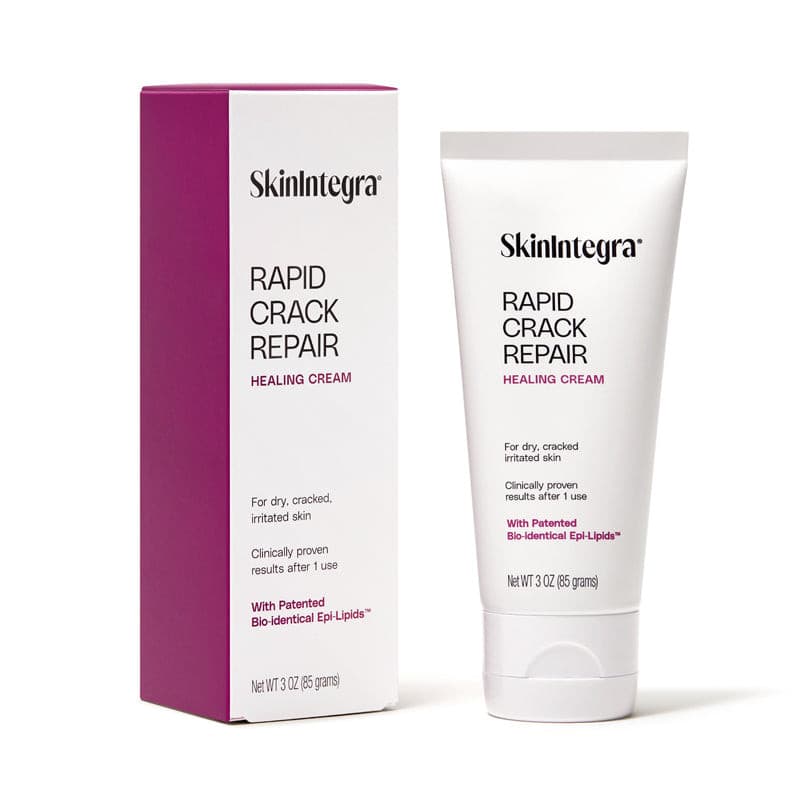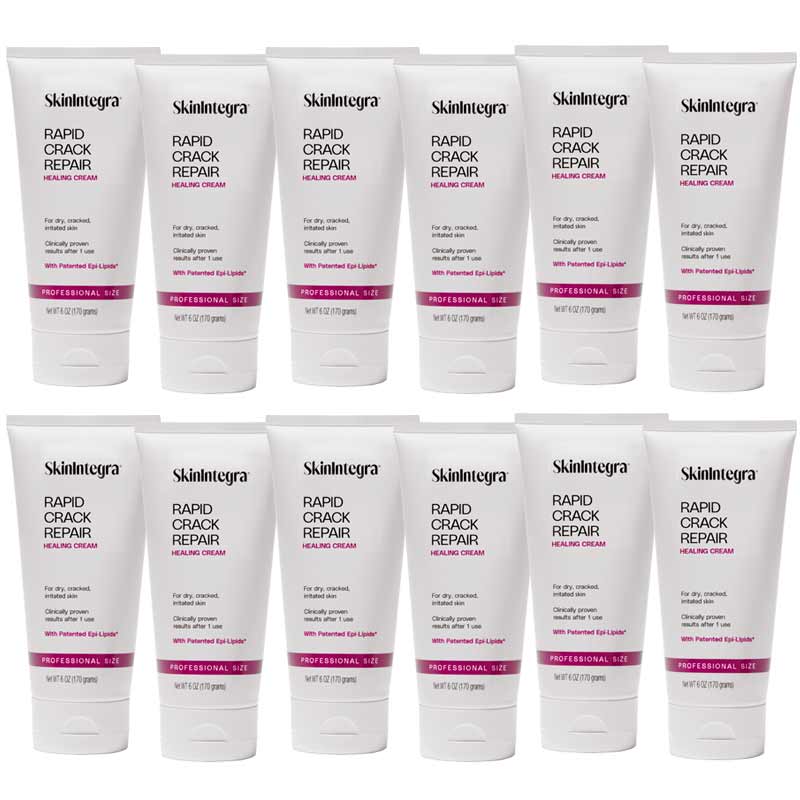Athlete’s foot, or tinea pedis, is one of the most common fungal skin infections—affecting up to 70% of people at some point. Yet for individuals with diabetes, it’s far from a minor nuisance. When left untreated, even simple peeling or redness can lead to cracked skin, secondary infections, and serious complications.
This article breaks down how to safely and effectively treat athlete’s foot—especially in diabetic feet—by combining antifungal medications with a urea-based foot cream. Learn how this dual approach not only clears the infection but also restores and protects the skin barrier to reduce recurrence.
What Is Athlete’s Foot?
Athlete’s foot is caused by dermatophyte fungi that thrive in warm, moist environments—like sweaty socks or damp locker rooms. These fungi feed on keratin, a protein in the outer layer of the skin, often starting between the toes and spreading outward.
Common Symptoms:
-
Itching and burning (especially between the toes)
-
Redness and flaking
-
Peeling or cracked skin
-
Blisters or oozing sores
Types of Athlete’s Foot
Understanding the type of athlete’s foot you’re dealing with can help determine the best course of treatment.
|
Type |
Description |
|
Interdigital |
Occurs between the toes (most common) |
|
Moccasin |
Dry, thickened skin on the soles and edges of the feet |
|
Vesicular |
Blisters on the sole or top of the foot |
What Causes Athlete’s Foot?
Several risk factors make athlete’s foot more likely to develop:
-
Walking barefoot in public places (e.g., pools, gyms, locker rooms)
-
Wearing tight or non-breathable shoes
-
Not drying feet thoroughly after bathing
-
Sharing towels, socks, or shoes
Why Athlete’s Foot Is Especially Dangerous for People with Diabetes
People with diabetes face a higher risk of complications from athlete’s foot due to:
1. Delayed Healing
Diabetes impairs circulation, making it harder for wounds or infections to heal.
2. Reduced Sensation
Peripheral neuropathy may prevent patients from noticing early signs of skin damage.
3. Higher Risk of Infection
Even minor fungal infections can progress to bacterial cellulitis, ulcers, or—worst-case—gangrene.
Takeaway: If you have diabetes, never ignore itchy, red, or peeling feet. Early treatment is essential.
Standard Athlete’s Foot Treatments
Over-the-Counter Antifungals
|
Form |
Active Ingredients |
Purpose |
|
Creams |
Clotrimazole, terbinafine |
Penetrate skin to kill fungus |
|
Sprays/Powders |
Miconazole, tolnaftate |
Keep feet dry and treat superficial infection |
|
Oral Meds |
Prescription only |
Used for persistent or severe infections |
Foot Hygiene Essentials
-
Wash and dry feet thoroughly, especially between the toes
-
Wear moisture-wicking socks
-
Alternate shoes to let them air out
-
Avoid going barefoot in communal areas
Why Antifungals Alone Aren’t Enough
While antifungals kill the infection, they don’t address the underlying skin barrier damage that allows fungi to thrive in the first place.
If your skin remains dry, cracked, or scaly, fungi can return—even after a round of medication.
Enter Urea Cream: A Game-Changer in Athlete’s Foot Treatment
What Is Urea?
Urea is a naturally occurring compound in the skin that:
-
Retains moisture (humectant)
-
Breaks down thickened skin (keratolytic)
-
Enhances the absorption of topical treatments
Key Benefits of Urea in Athlete’s Foot Treatment
|
Benefit |
Why It Matters for Diabetic Skin |
|
Exfoliation |
Gently removes thick, scaly skin where fungi hide |
|
Deep Hydration |
Prevents further cracking without adding excess moisture |
|
Barrier Restoration |
Helps rebuild a stronger skin defense |
|
Improved Treatment Penetration |
Allows antifungals to work more effectively |
Why Diabetic Patients Should Use Urea Cream with Antifungals
Combining urea cream with antifungal treatments offers a synergistic effect:
-
Faster Healing: Targets both infection and barrier repair
-
Better Absorption: Exfoliation allows medication to reach deeper skin layers
-
Lower Recurrence Risk: Healthy skin is more resistant to reinfection
How to Use Urea and Antifungal Cream Together
Daily Routine
-
Morning & Evening:
-
Apply urea cream first to soften the skin
-
Follow with antifungal cream to treat the infection
-
Always Wash & Dry Feet First:
-
Avoid rubbing; gently pat dry, especially between toes
-
Wear Clean, Breathable Socks
-
Continue Treatment:
-
Use antifungal cream for at least 2 weeks after symptoms disappear
Special Guidelines for Diabetic Foot Care
-
Inspect your feet daily for cuts, redness, or peeling
-
Schedule regular podiatry visits
-
Avoid foot soaks, razors, or physical exfoliants
-
Use diabetic-safe moisturizers
Advanced Prevention Tips
-
Apply urea moisturizer daily to maintain hydration and barrier health
-
Avoid petrolatum-based moisturizers that may trap excess moisture
-
Disinfect shoes with antifungal powder or spray
-
Never wear damp shoes or socks
Why SkinIntegra Is the Ideal Urea Cream for Diabetic Feet

SkinIntegra® Rapid Crack Repair Cream is more than a moisturizer—it’s a barrier-restoring formula tailored to diabetic feet prone to fungal infections.
What Makes It Different?
-
25% Urea: Optimal concentration for gentle exfoliation and moisture balance
-
Barrier Mimicking Lipids: Includes ceramides & fatty acids
-
Added Actives: Lactic acid (hydrating exfoliant), hyaluronic acid, vitamin C, and minerals
-
Clinically Validated:
-
In a lab study, SkinIntegra’s formula eliminated 99% of common bacteria and fungi in under 1 minute
-
Safe for Diabetic Skin:
-
No fragrances, dyes, parabens, phthalates, or petroleum
Trusted by Professionals
-
Used post-debridement by podiatrists across the U.S.
Shop SkinIntegra Rapid Crack Repair Cream
Support healing and prevention—safely, effectively, and fast.
FAQ: Athlete’s Foot & Diabetic Foot Care
Q: Can I use antifungal cream alone to treat athlete’s foot?
A: Yes, but pairing it with a urea moisturizer helps restore skin health and reduce recurrence.
Q: Is urea safe for diabetic feet?
A: Yes—especially at 25% strength in clinically formulated products like SkinIntegra.
Q: How long should I continue treatment after symptoms disappear?
A: At least 2 weeks to ensure complete fungal elimination and prevent relapse.
Q: What if I see peeling or blisters on my feet?
A: If you have diabetes, consult your podiatrist immediately. Blisters and peeling can lead to complications.
FAQ: Urea Cream and Athlete’s Foot
Q: Is urea cream good for athlete’s foot?
A: Yes. Urea helps exfoliate thickened, dry skin and improves absorption of antifungal treatments. It’s especially helpful for people with cracked or peeling feet.
Q: Does urea kill athlete’s foot fungus?
A: Urea itself doesn’t kill fungus, but by softening the skin and breaking down dead tissue, it allows antifungal creams to penetrate more effectively.
Q: Can I use urea cream and antifungal cream together?
A: Yes. Apply the urea cream first to exfoliate and hydrate, then layer your antifungal cream for targeted treatment. This combination is especially useful for persistent or chronic infections.





